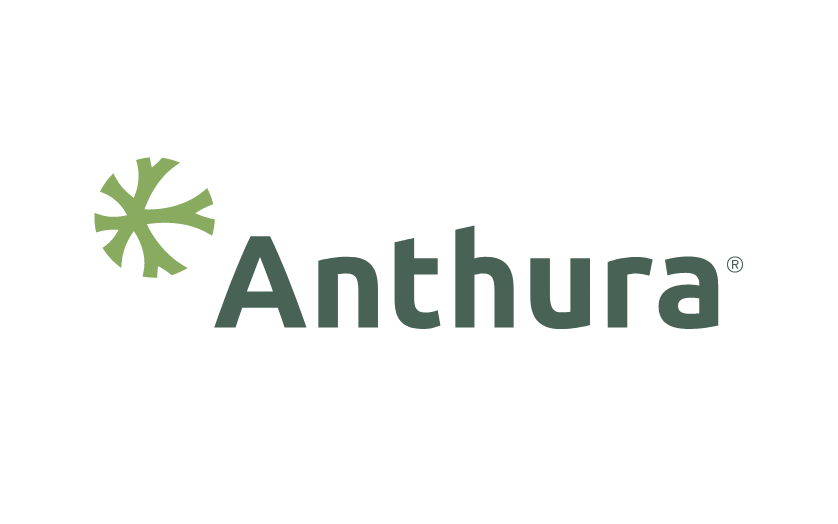The use of chemical plant protection products in greenhouse horticulture has been under a magnifying glass for some time. The number of available plant protection products has been declining for years and will fall by another 40% between 2023-2027.
At least that is the target. The latter is due to the strategic action plan within the European ‘Green Deal’ for achieving climate neutrality by 2050. To this end, the EU wants to transform the food system into a sustainable model. This action plan is known by the term ‘Farm to fork’. While it deals with sustainable food production, the same measures apply to ornamental crops and thus also Anthurium cultivation. Unfortunately, it must be concluded that the development of alternative plant protection products (chemical and biological) cannot keep up with the resistance development of pests and diseases, and the elimination of products actually intensifies resistance development. The European Commission wants to repeal the controversial Plant Protection Act (SUR), but this does not affect Europe’s strict authorisation policy. This strict policy will remain in place.
Floriculture
Europe is taking the lead in the world, but elsewhere in the world, manufacturers of plant protection products are also hampered by lengthy and costly authorisation procedures. Ornamental crops are often seen as less interesting, because their market potential is more limited than agricultural crops. The result: globally less research into good environmentally friendly and integratable products.
Anthurium cultivation
Anthurium cultivation involves a number of diseases and pests that could all be reasonably well controlled in the past with authorised crop protection agents. With the disappearance of these agents in recent years, this has become increasingly difficult and the number of bottlenecks is now increasing. Thrips and aphids are the main problems, but spider mites and slugs can also be troublesome. A newcomer on the scene is the cicada. It is still easy to deal with chemically, but there is no biological alternative for this insect. This also applies to Anthurium thrips (Chaetanaphothrips orchidii)
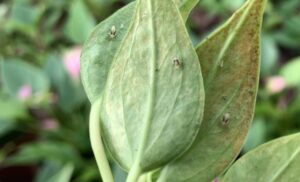
Cicada insect and damage.
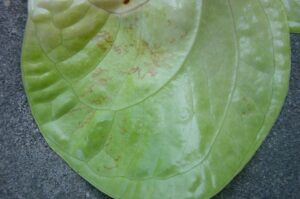
Cicada damaged flower.
What alternatives are there?
In recent years, major progress has been made in controlling thrips with predatory mites, fungi and nematodes, and aphids with Aphidoletes, Chrysoperla and Aphidius. Spider mites can be handled well with Neoseiulus californicus. Recent newcomers are the insect parasitic fungi, which have also proven effective on thrips and (to a lesser extent) aphids. Maintaining adequate hygiene is another pillar of insect control. Good entry control of incoming plant material and exchange of information with plant suppliers is important. Companies are considering investing in the installation of insect netting to prevent insect entry. In this regard, fine thrips netting is in the spotlight, which is much more effective than the standard insect netting now widely used.

Insect netting in air vents.
Growing Anthurium 100% organically is not possible at present. However, there are companies that can go a long way with some chemical corrections. Narrowing down the chemical package automatically means that resistance lurks. Resistance is much more likely if there are fewer than three agents available from different IRAC groups (insecticide resistance groups).
Besides biological approaches using predatory insects, insect parasitic nematodes and fungi, green agents are in the spotlight. Green agents are low-risk agents with a natural origin. These can include fungi, bacteria, plant extracts and signalling agents such as pheromones. In addition, the authorisation policy for biological agents is complex, so new authorisations are very long in coming.

Tabel: Active substances authorised for ’23-’27 in Gerbera.
The table above shows the number of active substances that are currently and will be available in the coming years, based on the expiry date of the agents’ authorisations.
These are authorisations in the cultivation of gerbera for the control of known pests and diseases in cultivation in the Netherlands. This is expected to be no different for Anthurium. The situation is similar for countries in Europe outside the Netherlands. The risk is very high that agents will disappear if the manufacturer fails or it is not profitable to renew the authorisation.
With newcomers there is a big challenge
Cicada is relatively new and is popping up here and there. Without chemicals, this insect will be difficult to control. Three years ago, thrips Parvispinus (pepper thrips) popped up in ornamental plant cultivation. This thrips also found its way to anthurium. In the meantime, the insect can also be partly controlled biologically, but in case of high pressure, an approach with adequately applied chemical treatments and biology is the only way. Anthura is doing a very extensive trial with Parvispinus this summer in cooperation with Koppert at Vertify. In this trial, a whole range of green agents will be tested in addition to a number of insects against the pepper thrips. These include agents based on insect parasitic fungi, nematodes and agents based on unsaturated fatty acids and potassium salts.
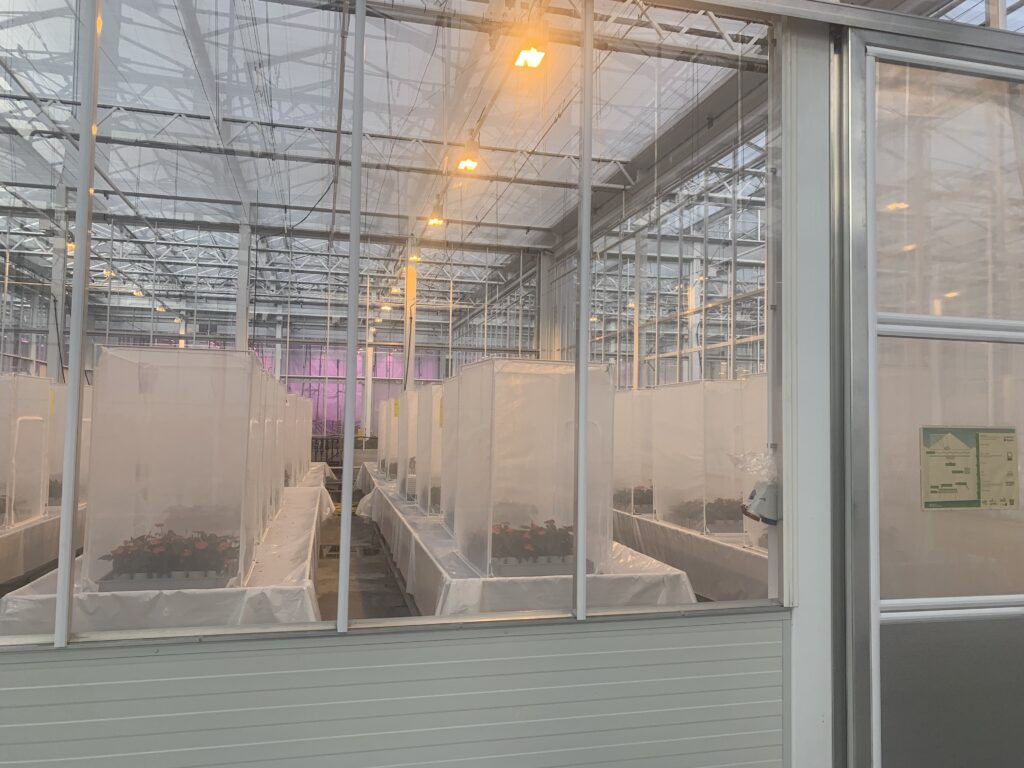
Cages at Vertify .
Anthurium thrips (Chaetanaphothrips orchidii) is the most difficult thrips to combat for Anthurium, especially for Anthurium cut flowers. There are still hardly any biological solutions available to combat these thrips.
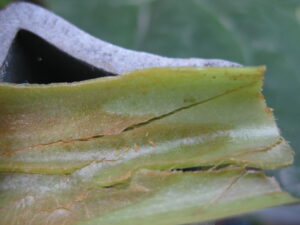
Anthurium thrips damage.
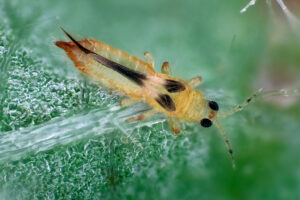
Anthurium thrips (Chaetanaphothrips orchidii).
In short, as a grower, stay well informed of all future trials and developments to keep and make the crop as clean as possible.
